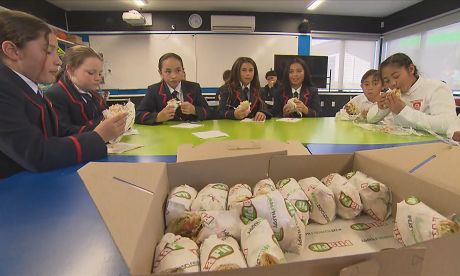A $220 million increase in funds for free school lunches looks set to divide communities, with some schools joining the scheme while nearby schools miss out.
About 640 schools have been invited to join the scheme next year.
At present 221 schools are benefiting from the scheme. Sixty are in the pilot regions of the Bay of Plenty, East Coast, Hawke’s Bay and Otago/Southland, while an additional 161 schools started getting the free lunches this week.
Next year’s expanded rollout of the scheme aims to reach the 25 per cent of students – about 200,000 children. A new “equity index” determines which schools qualify for the free school lunches.
The index is based on 26 facts about every child. These include their parents’ incomes, education levels, benefit histories, criminal records and how old they were when the child was born, plus how often the child has changed homes and schools and been reported to Oranga Tamariki.
This is quite a change from the school decile system which only considered five factors averaged across each neighbourhood and is currently being phased out.
Even with the more detailed criteria, the schools being offered free lunches include 94 per cent of decile-1 state and integrated schools, 89 per cent of decile-2 schools, 74 per cent of decile-3 schools, 47 per cent of decile-4 schools and 16 per cent of decile-5 schools.
However, the new criteria mean sometimes low decile schools miss out, while neighbouring schools benefit.
In Manurewa for example, where all except two schools are below decile 5, 20 schools are listed as getting free lunches. However, five other low-decile schools are not, including St Anne’s Catholic School Manurewa (decile 2).
St Anne’s principal Glen Ryan says his school wasn’t invited to be a part of the scheme.
“We would love to be involved as our children come from the same streets as the pupils in schools who will have access,” he says.
In Māngere-Ōtāhuhu, where all schools are decile 5 or below, 27 schools are listed but six are not. These include Al-Madinah School (2), Māngere Bridge School (3), Mt Richmond Specialist School (2), St Joseph’s School Ōtāhuhu (1), Waterlea Public School (5), Zayed College for Girls (3).
Asin Ali, principal of Muslim boys’ school Al-Madinah, says his school was not invited to join the scheme.
“We are a decile-2 school and a number of parents are struggling, so I think we should be considered in line with other schools in the area,” he said.
Nationally, Catholic and other integrated schools appear better off on the equity index than under the decile system.
In deciles 1 to 5, 38 per cent of Catholic schools and 36 percent of other integrated schools are on the list for free lunches, compared to 69 per cent of decile 1-5 state schools.
Seventy of the 72 decile 1-5 kura kaupapa Māori have been offered free lunches.
Eleven of the 861 schools qualifying for the lunches decided not to accept them.
Of those schools, one principal says she “opted out”, while another says despite qualifying for $400,000 of lunches there was no capital funding to upgrade the school’s 12 kitchens to the required commercial kitchen standard.
“It was basically bureaucracy gone mad,” he said.
Source
Additional readingNews category: New Zealand, Top Story.




